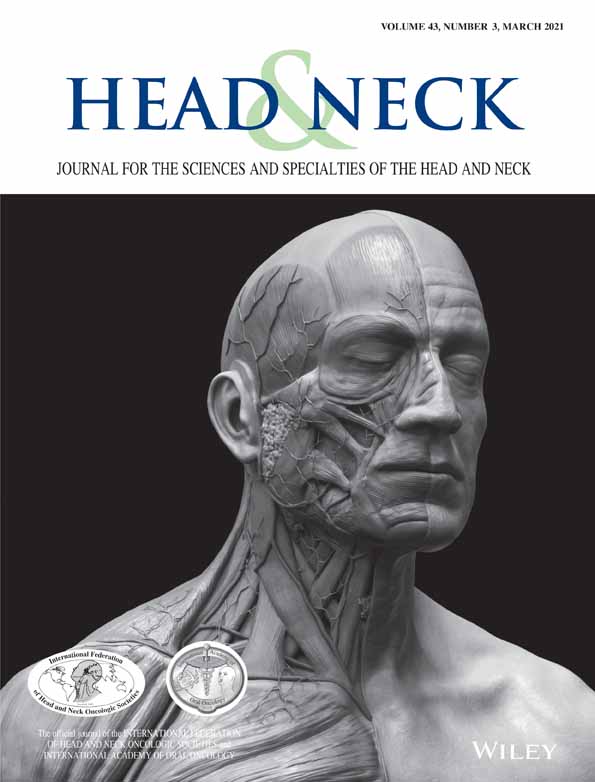Analysis of palliative care treatment among head and neck patients with cancer: National perspective
Abstract
Background
To analyze the characteristics and survival patterns of patients with head and neck squamous cell carcinoma (SCC) who received palliative treatment during their first course of treatment.
Methods
Cohort analysis utilizing the National Cancer Data Base (NCDB) of patients with a diagnosis of oral cavity/oropharyngeal, hypopharyngeal, and laryngeal SCC. Statistical analysis included multivariate logistic regression and Cox Hazard ratio modeling, and Kaplan-Meier survival analysis.
Results
165 081 patients were included, of which 2747 patients received palliative treatment. Patients who received palliative treatment tended to be ≥65 years old, black, Charlson/Deyo score ≥3, hypopharyngeal cancer, stage (III-IV), with Medicaid insurance (P < .05). Patients were more likely to be treated with palliative intent if they underwent chemotherapy/radiotherapy and declined surgery (P < .001) compared to patients who underwent surgery and declined chemotherapy/radiotherapy (P = .006).
Conclusions
Palliative care use in head and neck oncology is associated with older patients, non-whites, Medicaid patients, and nonsurgically treated patients.
CONFLICT OF INTEREST
The authors declare no conflicts of interest.
Open Research
DATA AVAILABILITY STATEMENT
The data that support this article is available through the National Cancer Database program. Access must be granted by the institution.




